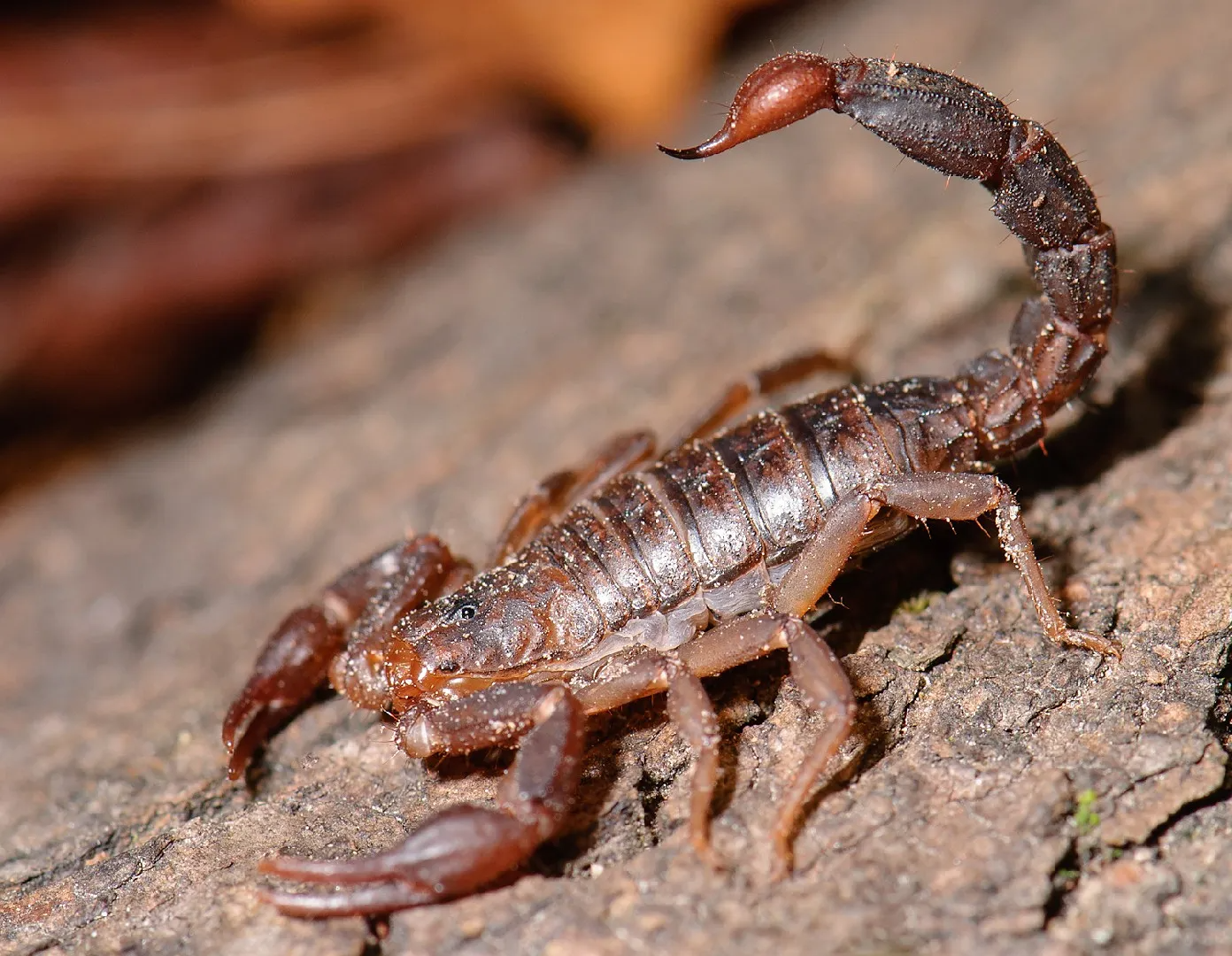Tennessee is known for its rich and varied wildlife, from black bears and white-tailed deer to countless species of birds, reptiles, and amphibians. However, one creature often left out of discussions is the scorpion. For many, the idea of scorpions crawling around the forests and backyards of Tennessee sounds like fiction. Yet these mysterious arachnids are very real—and they do live in the Volunteer State.
This article explores the presence of scorpions in Tennessee, the native species that lives here, and some fascinating truths that might change how you see these elusive creatures.
Are Scorpions Really Found in Tennessee?
Although scorpions are commonly associated with desert regions like Arizona, Nevada, and New Mexico, they are far more adaptable than many people realize. In fact, one species of scorpion is native to Tennessee and the southeastern United States. While they are not commonly seen and do not appear in large numbers, their presence in the state is well documented.
Because scorpions in Tennessee are small, shy, and nocturnal, most people live their whole lives without ever encountering one. But rest assured—they’re here, hiding beneath the forest floor and moving silently through the night.
Meet the Southern Devil Scorpion (Vaejovis carolinianus)

The only scorpion species native to Tennessee is known as the Southern Devil Scorpion, scientifically classified as Vaejovis carolinianus. This species belongs to the family Vaejovidae and is also referred to as the southern unstriped scorpion. It is found in forested and mountainous regions throughout the southeastern U.S., including Tennessee, Georgia, Alabama, South Carolina, and parts of North Carolina.
Despite its intimidating name, the Southern Devil Scorpion is small and relatively harmless to humans. Adults typically measure between 1.5 to 2.5 inches in length and are dark brown to black in color. Their size and appearance help them blend in well with their natural surroundings, such as rocks, logs, and leaf litter.
Tennessee’s Climate and Its Role in Scorpion Survival
Tennessee’s humid subtropical climate presents a challenge for many desert-adapted creatures, but the Southern Devil Scorpion has evolved to thrive in this unique environment. The state’s four distinct seasons—humid summers, cool springs and falls, and cold winters—create natural cycles that scorpions adapt to with remarkable efficiency.
During winter, these scorpions seek shelter beneath rocks, logs, or deep crevices to avoid freezing. In warmer months, they become active at night, hunting for insects, spiders, and other small arthropods.
Forested regions, especially those with abundant moisture, provide ideal microhabitats for this species. Leaf litter, rotting logs, and shady cover help them regulate their body temperature and avoid predators.
Behavior and Ecology of the Southern Devil Scorpion
The Southern Devil Scorpion is a solitary, nocturnal predator that plays an important role in the local ecosystem. Like other scorpions, it uses its pincers to grasp prey and a stinger to inject mild venom. However, its sting is primarily a tool for hunting rather than self-defense.
These scorpions feed on insects, spiders, centipedes, and other arthropods. By helping control the population of common pests, they contribute to ecological balance in Tennessee’s forests.
Unlike aggressive desert species, the Southern Devil Scorpion is reclusive and will only sting if provoked or handled. Its venom is not considered medically significant to humans.
How to Identify a Southern Devil Scorpion
If you happen to spot a scorpion in Tennessee, you can identify the Southern Devil Scorpion by a few key features:
-
Size: Typically between 1.5 and 2.5 inches.
-
Coloration: Dark brown to black, which camouflages well against the forest floor.
-
Body shape: Stout body with two large pincers in front and a curved, segmented tail ending in a stinger.
-
Lack of stripes: As the name “unstriped scorpion” suggests, this species does not have the pronounced dorsal striping seen in other scorpions like the Striped Bark Scorpion found further west.
Are Scorpions in Tennessee Dangerous?
The idea of being stung by a scorpion naturally causes concern. However, the sting of the Southern Devil Scorpion is generally mild and comparable to a bee sting. Most people will experience only temporary symptoms such as slight swelling, itching, or localized pain.
Serious reactions are rare and typically occur only in individuals with allergies to insect venom. As with any sting, basic first aid—washing the area, applying a cold compress, and monitoring for allergic reactions—is usually sufficient.
It’s also worth noting that no fatalities or major medical incidents have been attributed to scorpion stings in Tennessee.
How to Prevent Scorpion Encounters at Home
Though rare, scorpions may occasionally wander into homes, particularly in rural or wooded areas. To reduce the chances of such encounters, homeowners can take a few simple precautions:
-
Seal gaps around windows, doors, and foundations.
-
Remove woodpiles, rocks, and debris from around the house.
-
Keep basements and crawl spaces dry and well-ventilated.
-
Install weather stripping to block entry points.
If a scorpion is found indoors, avoid handling it with bare hands. Use a glass or jar to safely trap and release it outside.
Surprising Facts About the Southern Devil Scorpion
Despite their sinister reputation, scorpions are fascinating and complex animals. Here are a few intriguing facts about the Southern Devil Scorpion:
-
They glow under UV light: Like all scorpions, their exoskeleton fluoresces a bluish-green color under ultraviolet light, making them easier to spot at night.
-
They give birth to live young: Unlike most insects, scorpions don’t lay eggs. Instead, females birth live babies that ride on their back until they molt.
-
They can live several years: Some individuals in the wild live up to five or six years, especially in cooler climates like Tennessee’s.
-
They play a vital ecological role: As insectivores, they help keep insect populations under control.
How Tennessee’s Scorpions Compare to Western Species
The Southern Devil Scorpion differs significantly from the more infamous Arizona Bark Scorpion (Centruroides sculpturatus) and other desert-dwelling species. While the bark scorpion is highly venomous and sometimes aggressive, Tennessee’s native scorpion is docile and not dangerous to humans.
Additionally, desert species tend to be lighter in color and more agile climbers, often entering homes and hiding in shoes or under beds. The Southern Devil Scorpion, on the other hand, prefers to stay close to the forest floor and is not typically a household nuisance.
Where and When Are You Most Likely to See Scorpions in Tennessee?
Southern Devil Scorpions are elusive by nature. You’re most likely to find them during late spring, summer, and early fall, particularly on warm, humid nights. They emerge after sunset to hunt and explore but retreat quickly when disturbed.
If you’re exploring wooded areas, turning over rocks or logs (carefully) might reveal one. Just remember to put any object back in place to avoid disrupting their habitat.
In rural areas, particularly in East and Middle Tennessee, people occasionally spot them near firewood piles, sheds, or even basements.
What to Do If You See or Are Stung by a Scorpion in Tennessee
If you encounter a scorpion, stay calm. These creatures are not aggressive and will not attack unless provoked. Use a container to move them outdoors if needed. If stung:
-
Clean the wound with soap and water.
-
Apply a cold compress to reduce swelling.
-
Monitor symptoms.
-
Seek medical help if you experience any signs of an allergic reaction such as difficulty breathing, nausea, or widespread swelling.
FAQs About Scorpions in Tennessee
Are there really scorpions in Tennessee?
Yes, Tennessee is home to at least one native species of scorpion. The most commonly found species in the state is the Vaejovis carolinianus, also known as the Southern Devil Scorpion or Southern Unstriped Scorpion.
Is the Southern Devil Scorpion dangerous?
The Southern Devil Scorpion is not considered medically dangerous to humans. While its sting can be painful—similar to a bee sting—it rarely causes serious reactions unless the person is allergic.
Where are scorpions typically found in Tennessee?
Scorpions in Tennessee are most commonly found in the eastern part of the state, especially in wooded areas, under rocks, inside decaying logs, or around damp basements and crawl spaces.
How can I prevent scorpions from entering my home?
To prevent scorpions from entering your home, seal cracks and crevices in foundations and walls, keep firewood stored away from the house, and reduce moisture in crawl spaces or basements.
What should I do if I get stung by a scorpion in Tennessee?
If stung, clean the affected area with soap and water, apply a cold compress, and monitor for signs of allergic reaction. Most stings are not serious, but seek medical attention if you experience swelling, difficulty breathing, or a severe reaction.
Conclusion: Scorpions in Tennessee Are More Fascinating Than Frightening
Although Tennessee isn’t known for scorpions, the presence of the Southern Devil Scorpion (Vaejovis carolinianus) proves these resilient arachnids can thrive in unexpected places. They are quiet, solitary, and ecologically important residents of the state’s forested areas.
Their sting is mild, their sightings are rare, and their role in the ecosystem is surprisingly valuable. Understanding them not only eases fear but also promotes appreciation for the unique biodiversity that Tennessee supports.
Whether you’re a nature lover or a curious resident, knowing about Tennessee’s native scorpion can add a new dimension to your understanding of local wildlife. So next time you’re out hiking or clearing your yard, keep an eye out—you might just discover one of Tennessee’s most secretive predators.






